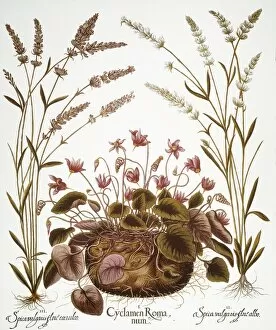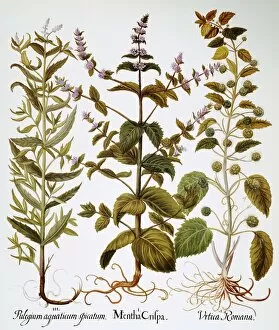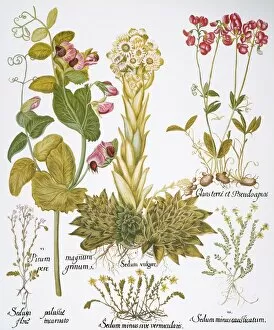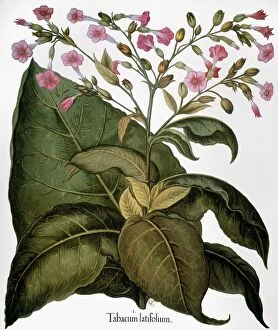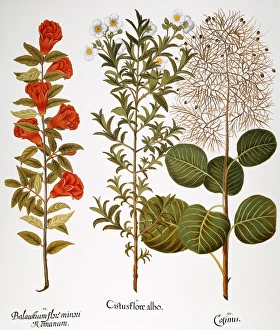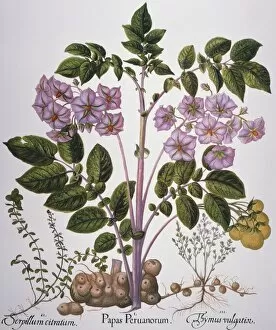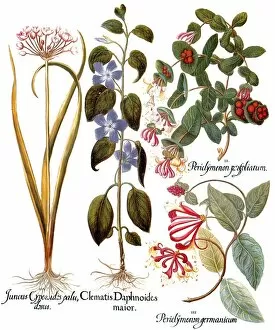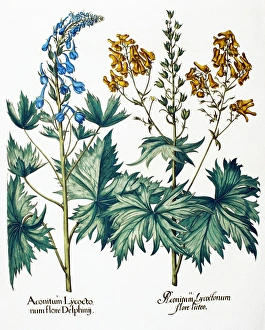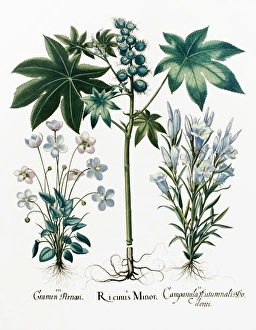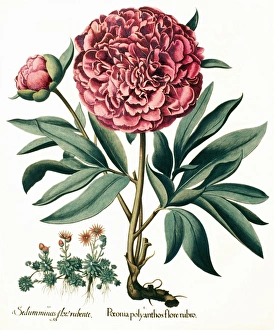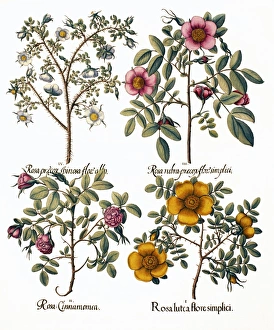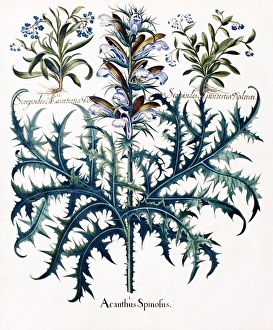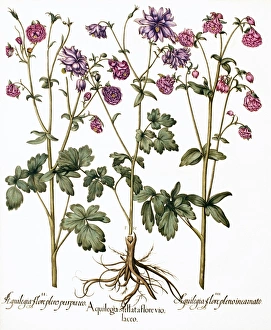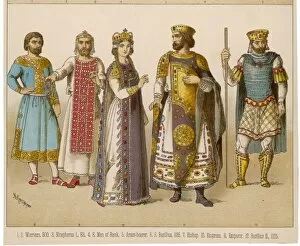Basilius Collection (page 3)
"Basilius Besler's Florilegium: A Botanical Masterpiece from 1613" Step back in time to the year 1613, when Basilius Besler unveiled his magnificent Florilegium
All Professionally Made to Order for Quick Shipping
"Basilius Besler's Florilegium: A Botanical Masterpiece from 1613" Step back in time to the year 1613, when Basilius Besler unveiled his magnificent Florilegium, a collection of engravings that captured the beauty and diversity of nature. Amongst these remarkable illustrations were depictions of various plants and fruits, each meticulously detailed. In one engraving, we are introduced to the gourd family (Cucurbitaceae), showcasing the unique shapes and textures of this versatile plant. Taro or dasheen (Colocasia esculenta) also makes an appearance with its vibrant leaves adding a touch of elegance. And who could forget the pumpkin (Cucurbita pepo), symbolizing autumnal abundance? Moving on to another enchanting illustration, we encounter variegated Spanish iris (iris bulbosa mixta) alongside wild leek (moly latifolium). The contrasting colors and intricate patterns create a visual feast for the eyes. Another variegated Spanish iris (iris bulbosa varrigata) adds further intrigue to this botanical tapestry. Lily-of-the-valley (Convallaria majalis) takes center stage in yet another engraving, accompanied by St. Bruno's lily (Paradisea liliastrum) and pink lily-of-the-valley. These delicate flowers exude grace and purity as they dance across the page. Citrus fruits steal our attention next - citron (Citrus medica), Seville orange (Citrus aurantium), and orange itself bring their zesty aromas into our imagination. Their vibrant hues seem almost tangible through Besler's artistry. The poppy flower graces us with its presence in two captivating varieties while tomatoes make their debut as well – Lycopersicon esculentum bursting with juicy goodness.

